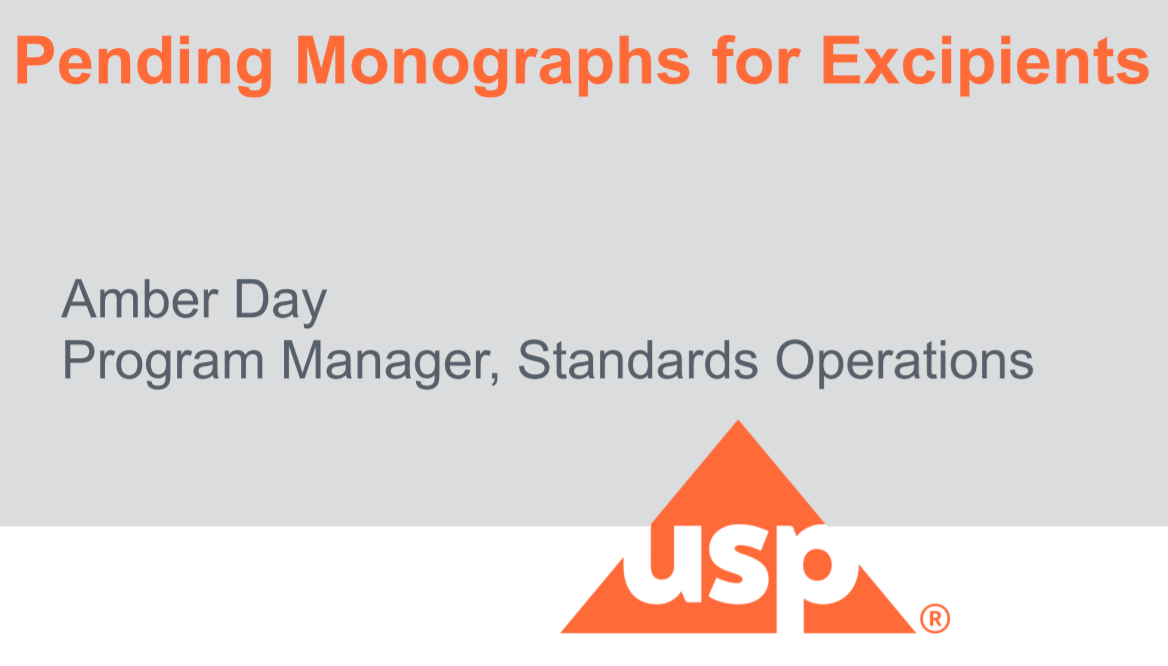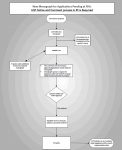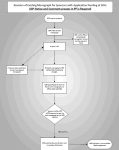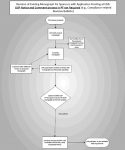Pending Monographs for Excipients – Background & Guide

Do you want to use the USP Pending Monograph process? Or have you ever wondered what the USP Pending Monograph process is and how it works in detail? See our article explaining the PMP with a full overview or have a look at our summarizing video. Both are based on USP information. Moreover, you can download the different guiding process graphics from USP here!
![Pending monographs process USP, Copyright by USP]() What is the USP Pending Monograph Process for Excipients?
What is the USP Pending Monograph Process for Excipients?
The traditional USP revision process addresses products that are already approved, but the Pending Monograph process allows for development of monographs or monograph revisions for articles awaiting approval by FDA. Also it permits publication of these proposals in the Pharmacopeial Forum (PF) for notice and comment where required in accordance with USP’s typical Request for Revision processes.
When is it available for you?
The Pending Monograph process is available where USP does not yet have a monograph for a drug, or where there is an existing monograph with requirements that are not met by a potential product under review by FDA. The PMP allows the new or revised monograph to become official more rapidly than would be possible if development began only after final FDA approval.
In cases where there is an existing monograph, it is common for the application holder to propose reconciliation between their product and the existing monograph requirement by donating analytical methodology and reference standard bulk material as necessary to revise the monograph. The USP Pending Monograph process allows for development of these proposals in a number of different ways, depending on the type of change that is needed and the amount of time available before the anticipated approval. In any case, these proposals remain in an unofficial status until FDA approval of the market application held by the donor.
Watch out:
In either of these situations – the proposal of a new monograph or the proposal of a revision to an existing monograph – the information and any necessary reference standard bulk candidates (RS bulk) will come from the company proposing the monograph to USP. USP will share this information with the FDA prior to moving the proposal forward.
What are the Application Requirements for Excipient’s Pending Monographs?
- Requests for revision under the Pending Monograph approach will be accepted from sponsors:
Who have filed with FDA an Abbreviated New Drug Application (ANDA) or Abbreviated New Animal Drug Application (ANADA); or - Who have filed with FDA a Biosimilar or Interchangeable Biologics Licensee Application (BLA); or
- Who have submitted a Drug Master File (DMF) for an article to FDA that is referenced in an ANDA, ANADA, or BLA; or
- Whose substance is or will be the subject of a Time and Extent Application or citizen petition to amend an FDA OTC drug monograph. Submissions from other sponsors may also be accepted on the case-by-case basis.
![Pending monographs process USP, Copyright by USP]() Additional Information:
Additional Information:
- Unless USP determines otherwise, if the proposed monograph includes the use of a new USP Reference Standard then USP will not publish the proposed monograph in PF until it has received the necessary reference standard bulk.
- If the sponsor has filed an ANDA or ANADA or BLA, it must agree to inform USP promptly of any changes or additions that should be made to a pending monograph as a result of the regulatory review and approval process (including, but not limited to, providing USP with the dissolution test included in the approved product specification). This will help ensure consistency between the monograph proposal and the private specification approved by FDA.
DOWNLOAD THE PRESENTATION HERE
Which types of Pending Monographs are there?
How does the process work?
1. The Request for Revision will be reviewed in accordance with USP’s usual process.
2. If USP decides to proceed with the revision and has received RS bulk, then the proposal will be developed, balloted, and published in accordance with the applicable flowchart in Exhibits A-C attached:
- Exhibit A describes the process to be used for revisions of existing monographs, where the revision meets the criteria for use of a Revision Bulletin under USP’s Accelerated Revision guideline and does not require notice and comment.
- Exhibit B describes the process to be used for revisions of existing monograph where notice and comment through PF is required.
- Exhibit C describes the process to be used for development of new monographs.
3. Sometimes ANDA and ANADA and BLA applicants are required to make changes to methods, acceptance criteria, or other portions of their submission during the regulatory review process. If this happens after submission of the Request for Revision, the sponsor must notify USP about such changes so that appropriate changes can be made to the proposed monograph. This may require extension of the comment periodor republication in PF with clear indication of what has changed. If the sponsor withdraws its application from FDA, they must notify USP so that the Request for Revision can be terminated properly.
4. If following publication in PF a proposal is deferred from balloting for more than two years while the sponsor is awaiting FDA approval, it must be republished in PF prior to balloting and becoming official.






